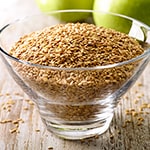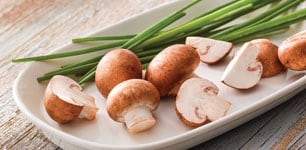 There are multiple reasons why some people can't have gluten in their diets. Some Americans have gluten sensitivities, and others may be dealing with celiac disease. Understanding what’s causing your gluten intolerance is just the beginning. The next step is knowing which nutrients may be missing from your gluten free diet, such as fiber, iron, folate, and other B vitamins.
There are multiple reasons why some people can't have gluten in their diets. Some Americans have gluten sensitivities, and others may be dealing with celiac disease. Understanding what’s causing your gluten intolerance is just the beginning. The next step is knowing which nutrients may be missing from your gluten free diet, such as fiber, iron, folate, and other B vitamins.
Why can’t I have gluten?
May is National Celiac Disease Awareness Month, a great time to learn more about this condition and how it can be managed through proper eating and nutrition. Celiac disease is caused by sensitivity to gluten, the generic name for certain types of proteins in grains like wheat, barley, rye, spelt, Kamut, and triticale (a grain crossbred from wheat and rye). More than three million Americans are affected by celiac disease, although most remain undiagnosed. Beyond celiac disease, an estimated 18 million Americans are sensitive to gluten, a condition called non-celiac gluten sensitivity (or NCGS). Though celiac disease cannot be cured, the condition can be managed. The only treatment for celiac disease is to eat a gluten free diet, which is mostly made up of starches that are not rich in iron, folate, and other B vitamins. But managing celiac disease is not just about eliminating gluten from your diet—it also involves making sure you get all the nutrients, vitamins, and minerals you need.
Key nutrients in a gluten free diet.
Tips on eating a balanced gluten free meal.
The following tips were provided by Publix Dietitians to get the most nutrition in a gluten free diet:
Sources:
- "Non-Celiac Gluten Sensitivity." BeyondCeliac.org. Accessed December 7, 2015.
- "Summary Tables, Dietary Reference Intakes." United States Department of Agriculture, National Agriculture Library: Food and Nutrition Information Center. Accessed December 7, 2015.
- "Cooking Whole Grains." WholeGrainsCouncil.org. Accessed July 30, 2014.
- "Iron Dietary Supplement Fact Sheet." National Institutes of Health (NIH): Office of Dietary Supplements. February 11, 2016.
- U.S. Department of Agriculture and U.S. Department of Health and Human Services. "2010 Dietary Guidelines for Americans. 7th Edition." Health.gov: The Office of Disease Prevention and Health Promotion. December 2010.
- "Folate Fact Sheet for Health Professionals." National Institutes of Health (NIH): Office of Dietary Supplements. February 11, 2016.

 You are about to leave publix.com and enter the Instacart site that they operate and control. Publix’s delivery and curbside pickup item prices are higher than item prices in physical store locations. Prices are based on data collected in store and are subject to delays and errors. Fees, tips & taxes may apply. Subject to terms & availability. Publix Liquors orders cannot be combined with grocery delivery. Drink Responsibly. Be 21. For prescription delivery, log in to your pharmacy account by using the Publix Pharmacy app or visiting
You are about to leave publix.com and enter the Instacart site that they operate and control. Publix’s delivery and curbside pickup item prices are higher than item prices in physical store locations. Prices are based on data collected in store and are subject to delays and errors. Fees, tips & taxes may apply. Subject to terms & availability. Publix Liquors orders cannot be combined with grocery delivery. Drink Responsibly. Be 21. For prescription delivery, log in to your pharmacy account by using the Publix Pharmacy app or visiting 
